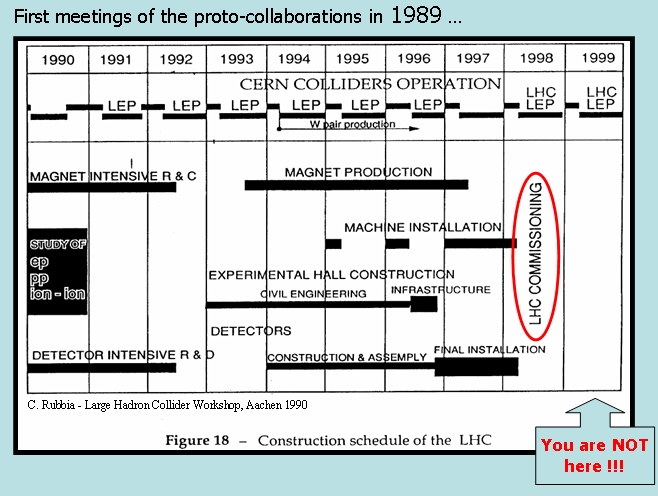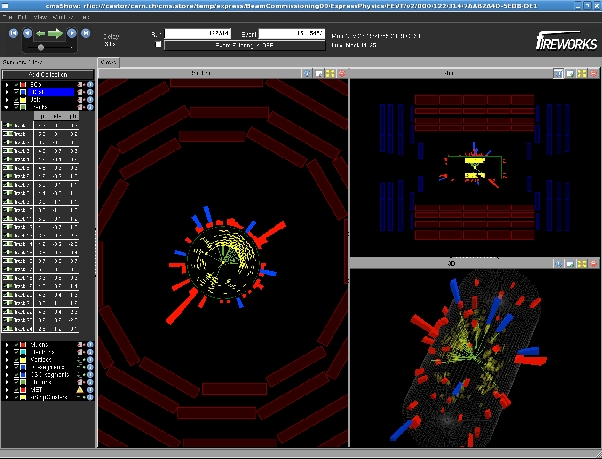It has been a long way since the first design of this extraordinary machine. I was reminded of just how much effort the construction and commissioning took by a slide shown by Ives Sirois at a workshop in Turin today: it is a schedule of the construction of the LHC dated 1989!

As you can see, the LHC construction was supposed to go on during LEP operations: they were once thinking that they could install the big proton machine in the tunnel without having to remove the electron-positron synchrotron. Things took a different turn soon, and we are now in 2009, with two years of delay with respect to the above (admittedly optimistic) schedule!
But we are there now. Today, the first 450-GeV protons were made to coast along the beam, bent by dipole magnets but not accelerated further after their injection in the 27 km tunnel. 900 GeV of energy available for collisions are a respectable goal -suffices to say that it is the first time we see this energetic proton-proton collisions (the SppS and the Tevatron only produced proton-antiproton collisions)- but admittedly from a scientific standpoint there is not much to be excited about. It is rather what these first collisions announce that is bound to make everybody's eyes fixed on CERN today.
So let us see what CMS collected. Below is a picture of the very first collision recorded by the experiment. It is a good idea to have a close look, because displays such as the one shown might one fine day be presented to evidence new physics!

In the picture you see three main displays. The one on the left shows a zoom into the inner tracker, with the charged tracks reconstructed from the hits they left in the silicon microstrip sensors; outside of the inner circle you can see the energy deposits in the calorimeter.
The outer red "bricks" show the muon drift tubes, which remained silent: good to know, since we do not expect that a random collision will produce muon candidates; it would have actually been a bad sign if the muon detector had lit up!
The pictures on the right show respectively a side view and a 3-D view. By now you should have figured out the meaning of the various components. One thing to note, though, is the remarkably non-jet-like structure of the calorimeter energy deposits. Remember, this is a randomly picked collision, and the released energy is too small to produce very narrow, localized hadronic jets. We should all look forward to more interesting pictures in the forthcoming days!
For more pictures from all the four experiments, please read the CERN press release.





Comments